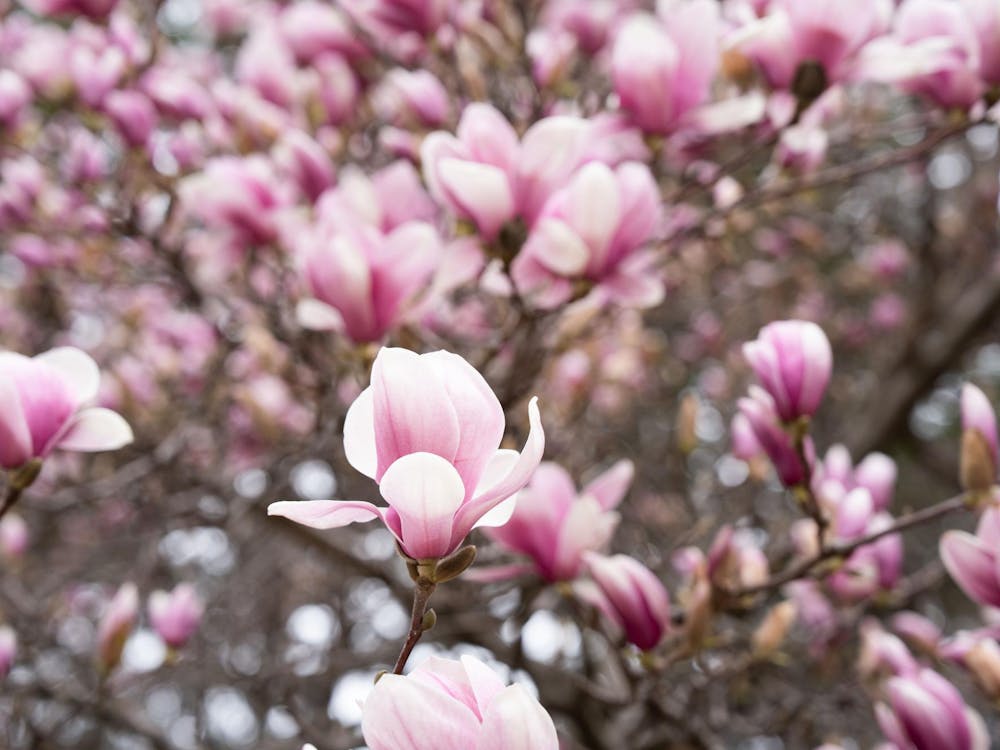When W. Barksdale Maynard ’88 was rejected as an Orange Key tour guide over twenty years ago, an activity in which he “desperately” wanted to take part, he was upset. In hindsight, it was a shocking disappointment; but today, it is obvious he has overcome that rejection.
Maynard, now a specialist on University history, took alumni, students and their families gathered on the steps of Nassau Hall for a campus tour on Friday morning. The tour explored the University’s expansion and its complex, layered architecture, examining up-campus buildings from Alexander Hall to the Wilson School.
Many years later, he said that he met the woman who decided not to accept him to Orange Key, explaining it by saying that Maynard, a native of Mississippi, sounded too Southern.
Things have improved for Maynard since then. While at the University, he majored in art history and now works as a writer, working at the intersection of architecture and American history. He focuses on the University in his newest book “Princeton: America’s Campus.” Out of the five books he has written so far, this is his second on the University.
Maynard began Friday’s tour by elaborating on the title of his new book, calling Princeton the very first campus in the country. The word “campus” derives its modern usage from documents dating back to the University’s earliest days, he said, when it was first used in primary sources describing tea burning during the Stamp Act on the lawn in front of Nassau Hall.
The tour followed the expansion of campus toward University Place, an expansion that would eventually provide the buildings for Rockefeller and Mathey College. Maynard credited University president James McCosh as the decisive figure in this expansion that would eventually result in the creation of the modern campus. During his presidency from 1868 to 1888, McCosh built Witherspoon Hall, which was the largest dormitory in the country when it was built in the 1870s. Woodrow Wilson was among the many students who have lived in the building.
While the University has continued to expand and evolve over the years, many University buildings have been preserved because of resistance to change, he said. Alumni protested the proposal to tear down Prospect House in order to build a library on the grounds.
“The University has had a conservative unwillingness to demolish anything ... to get rid of anything,” Maynard said.
Despite this resistance, some buildings have been demolished over the course of the University’s history. The old art museum was torn town because it lacked running water as late as the 1950s. Philosophical Hall, which was built in 1803 in conjunction with Stanhope Hall, was demolished in 1873 to allow for the construction of Chancellor Green. Maynard said that his favorite building on campus is Chancellor Green, which he says is a beautiful building that “people don’t pay much attention to.”
He also noted that while the majority of the architecture is Gothic, there are nevertheless a few oddities that stand out. He said that Whig Hall and Clio Hall are “like spaceships that landed from outer space. It’s nonsensical, but it’s delightful.”
As far as the more modern buildings are concerned, he called New Butler “excellent.” He said that Wilson College, where he lived as a student, is “mediocre” but explained that when it was built in the 1960’s, the University was short on funding.
While Maynard said that his “mission in life is not to puncture every Orange Key myth,” he did debunk one popular anecdote. Many tour guides, according to Maynard, have said that when the University Chapel was built in the 1920s, its architect Ralph Adams Cram placed a bulldog in the gutter to pay homage to Yale, which was allegedly his alma mater. However, Cram never attended Yale and was instead what Maynard called a “self-taught genius.”

Maynard previously did a similar walking tour during Reunions last year that extended all the way down campus to Wu Hall. Next year, he hopes to continue the tradition; it will be his 25th reunion.







